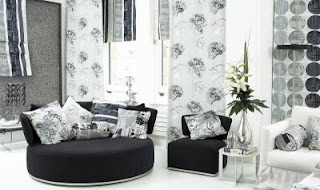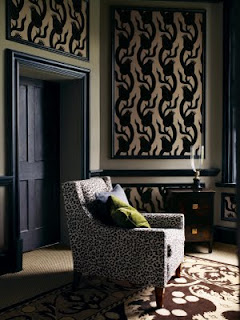Interiors
If your family meals are anything like mine, then you are likely to be at the table for a long time, so ensure that you have a few extra seat cushions available for those who might not have as much “personal” padding! It can also be a boon for younger members of the family who need some extra height to help them enjoy the spirit of the adult table!
Keep a theme in mind and work this through the entire table. Start your decorating scheme with a centre piece to set the tone; a glass bowl or vase filled with glitter sprayed pine cones or assorted baubles in your chosen colours is a simple, but effective option. Alternatively, twigs and nuts sprayed in gold or silver, combined with wired ribbon and oranges pierced with cloves or coated with glitter look fantastic and need not cost the earth.
Choose the size of your decorations carefully to avoid blocking the view of other diners or taking up too much room needed for serving dishes. Follow this colour scheme through with table linen, candles, crackers and cushions – a handful of table glitter or a scatter of fake jewel beads add a delightful hint of indulgence.
For a rich, traditional and opulent feel then the classic deep red and gold has to be the order of the day. Heavy, warm colours will give your table a lovely cocoon feeling, gathering your guests together against the cold winter exterior.
Alternatively, for a look of cool sophistication that hints at understated luxury, dress your table in crystal and silver with in a dash of light sapphire blue.
For my money, starched table linen always feels extra special, so go the whole hog and let rip with the spray can when you do the ironing pre-Christmas. It also makes it much easier to create all of those incredible sculptures with napkins that every table should have at this time of year.
Over head lighting should be dimmed to enhance the feeling of cosiness. Remember, that there is nothing more romantic, or flattering, than candlelight, so invest in some interesting candlesticks and choose candles that complement your scheme. Small tea lights on the table also work well in votives or cut glasses, but do be mindful that they get hot and need care and attention if party poppers are in the offing!
Finally, beware the allure of a real fire in older properties. They are romantic and heart-warming, but you need to ensure that there is enough room between the fire and the table (or be ready to instigate a rotating seating plan) to avoid making the guests sitting directly in front of it wonder if they are actually being roasted for the main course!
Jamie Hempsall is one of the regions leading Interior Designers and a member of BIDA. For more information visit his website www.jamiehempsall.com or call him on 01777 248463.








 A floor (or standard) lamp is exceptionally important as a lighting option in the home – most notably in general living areas where is can be useful in providing more general light than a table lamp, without the harsh glare often found from overhead lighting.
A floor (or standard) lamp is exceptionally important as a lighting option in the home – most notably in general living areas where is can be useful in providing more general light than a table lamp, without the harsh glare often found from overhead lighting. Where more direct light is needed, they also make practical task lamps: perfect for reading by. To give the best possible reading environment ensure that the light is cast from behind the reader’s shoulder to provide optimum light, with the bottom of the lampshade roughly at seated eye-level to minimise glare.
Where more direct light is needed, they also make practical task lamps: perfect for reading by. To give the best possible reading environment ensure that the light is cast from behind the reader’s shoulder to provide optimum light, with the bottom of the lampshade roughly at seated eye-level to minimise glare. 













.jpg)

